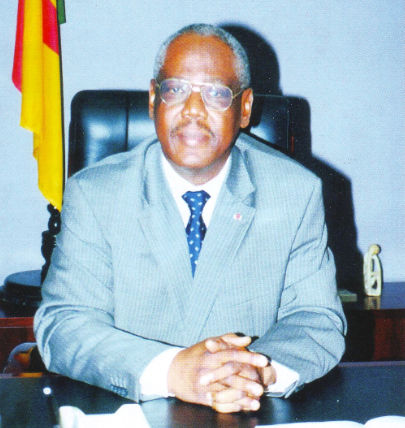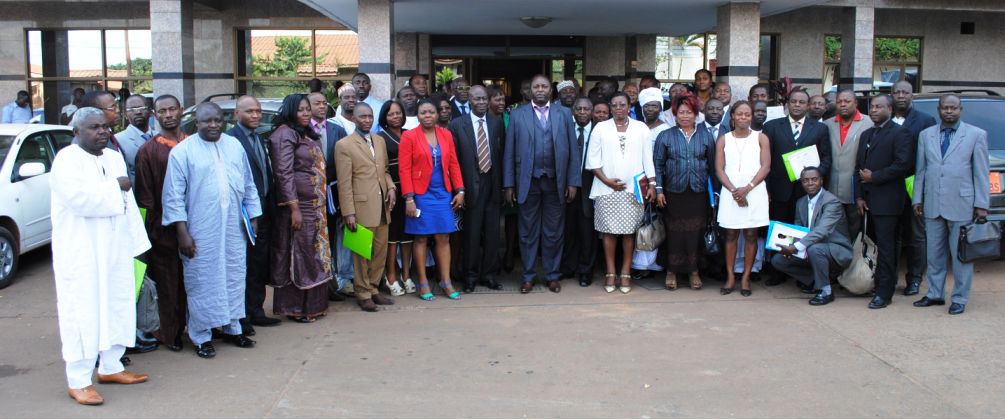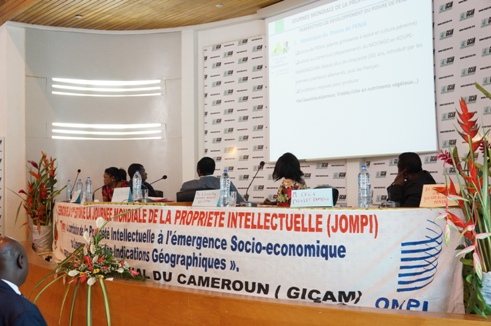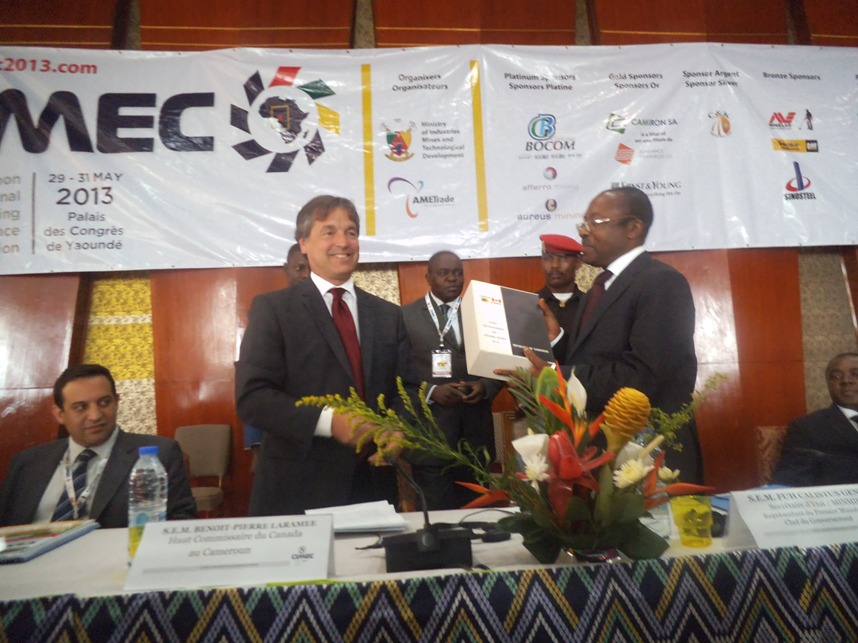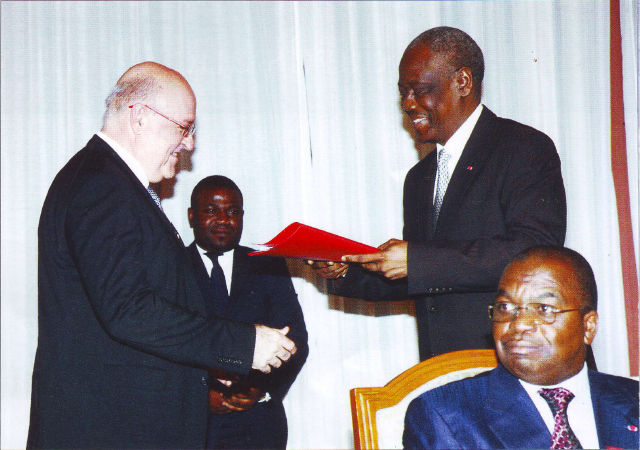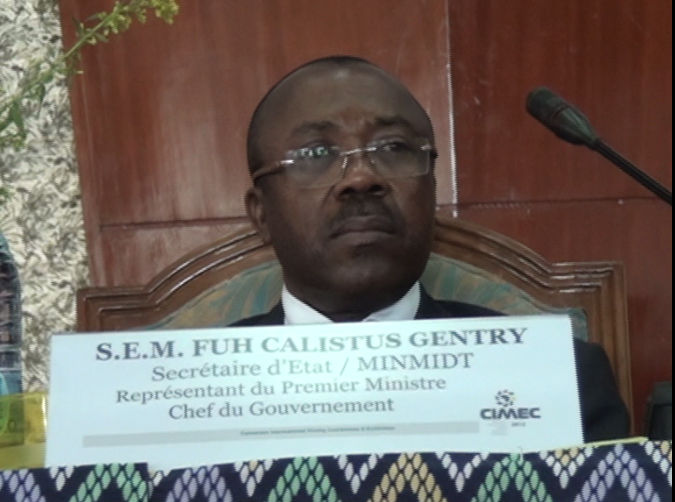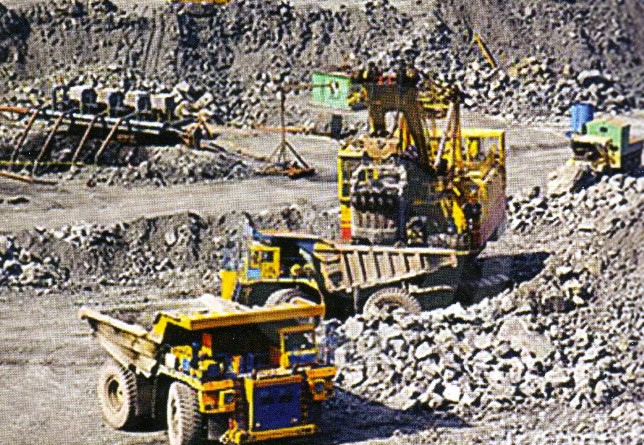MINISTRY OF MINES, INDUSTRY AND
TECHNOLOGICAL DEVELOPMENT
Headquaters:
Ministerial building (immeuble rose) - Yaounde
Tel : +237 681 129 081
E-mail : [email protected]
The news
Diary and ServicesDocuments-DownloadsMultimediaUseful LinksVisites count1966329
Today Yesterday This Week Last Week This Month Last Month All days 3660 4056 10558 1924620 81525 122926 1966329 Guest on lineWe have 48 guests and no members online |
PRECASEMGENERAL DATA ON THE PROJECT
1. CONTEXT AND JUSTIFICATION Cameroon has a huge geological potential for a number of minerals that, if well managed, could contribute to the country’s economic growth. Cameroon is endowed notably with large deposits of iron ore, gold, bauxite, diamonds, limestone and nickel. However, despite its geological wealth, mining is not yet playing a major role in Cameroon’s development, and the mining sector remains on the fringe of the economy. As concerns mining, a number of projects are in advanced stages. These include: the Mbalam iron ore project promoted by CamIron, the Nkamouna nickel-cobalt project near Lomie, owned by Geovic, and the bauxite development project in the Adamawa at Minim-Martap and Ngaoundal, promoted by Cameroon Alumina and the Mobilong diamond mining project near the border with Central African Republic, promoted by Cameroon & Korean Mining. Nevertheless, only two mining licenses have been issued to date: one for nickel-cobalt operation in 2003 and one for the C&K diamond project in 2011. Mining proper has not yet begun on the field. Cam iron recently signed a mining convention with the Government and the mining license shall only be issued when certain conditions have been met. At the purely geological level, geological cartography and the overall knowledge of the country’s mineral potential is still very limited and currently seem outdated. Geophysical and geochemical data are still inadequate for vast areas or need to be reinterpreted using modern technologies and approaches when they are available. Geologists reveal that current, more than 50% of the territory remains unknown. Cameroon is currently at an important crossroads as far as the development of the mining sector is concerned. Sound management of revenues from the extractive industries represents a great potential to fight poverty and contribute towards sustainable development. As a matter of fact, the mining industry generated direct and indirect jobs. It enables technology transfer and generates substantial revenues which could enable the government to develop major infrastructures, engine of development for other sectors. 2. THE PROJECT OBJECTIVE The Project Development Objective is to improve (i) the efficiency and transparency of the mining sector management and (ii) the frameworks for sustainable mining development. To achieve this objective, the project will focus on institutional strengthening and on the local/regional integration of mining activities. It will contribute to the strategic objective, which stretches beyond the scope and time-line of this project, of increasing the contribution of mining to sustainable growth and development. In addition, it will contribute towards government’s effort in development an enabling business climate in the sector, in improving transparency, access to information and facilitation of dialogue among stakeholders in the sector. Viewed from this standpoint, the project is fully in line with government’s ambitions spelt out in the document « Cameroon : Vision 2035 », which focuses on mining and the sound management of its natural resources (mines, forests, agriculture, etc.) as well as on the rapid development of its roads, railways, airports, etc. infrastructures. The project equally fits under the first pillar of the World Bank Country Assistance Strategy, supporting competitiveness, based on improving efficiency, transparency, and sustainability in the mining sector management. 3. PROJECT BENEFICIARIES The beneficiaries will be
4. RESULTS INDICATORS Although the major benefits of mining investments are best measured over a longer time horizon (Contribution to economic growth and development), the indicators summarized below will be used to measure progress over the life of the Project.
5. PROJECT DESCRIPTION The Project has three components: Component A. Access to Mineral Resources and Governance of Mining Operations The main objective of this component is to improve knowledge and access to mineral resources as well as the management of extractive operations. It includes a geology programme, support to rights management and monitoring of mining operations, mechanisms intended to strengthen transparency and accountability in the mining sector. Component B. Integration of Mining into Local and Regional The mining industry usually operates in remote region of the world, very often sensitive at the social and environmental levels. In Cameroon where industrial mining is yet at its early stages, this entails a certain number of challenges at the level of local and regional development. Exploration activities raise a lot of expectations and sometimes generate conflicts with such activities as land conservation or other land uses. At the same time, fundamental uncertainty concerning prospecting and exploration of unknown mineral resources is not often understood. Based on international experience, mining activities in Cameroon, especially when they are accompanied by major infrastructure developments, may generate more “shocks” than anticipated by the Government. B.1 Mineral Resources Dynamic Management System In accordance with Law No. 2011/008 of 6 May 2011 to lay down orientations for regional development and sustainable development in Cameroon, Government intends to launch regional development activities in all the regions. Within this framework, support will be provided to all the regions where mining and the development of infrastructure may conflict with the activities of land conservation and other land uses. B.2 Coordination between Mines, Forests, and Environment Stakeholders A sound analysis of potential conflicts and systematic and official resolution methods are necessary. B.3 Local and Regional Linkages We have learnt from international experience that mining operations also presents many social risks. Mitigating some of the social risks induced by mining operations requires empowering local communities and municipalities and other stakeholders in the mining sector, promoting new economic activities and improving the efficiency of social services in mining areas. B.4 Framework for Mining-related Infrastructures This sub-component will support activities to facilitate the development of adequate PPPs and increase chances exploiting national mineral resources in a sustainable manner. Component C. Management and M&E of the project A Project coordination has been put in place to support the Project Coordination and management of procurement, financial management, and disbursement as well as the monitoring and evaluation of project implementation. 6. INSTITUTIONAL AND IMPLEMENTATION ARRANGEMENTS Three entities are responsible for the Project. The Ministry of Mines, Industry and Technological Development (MINMIDT), is responsible for the implementation and oversight of the Project. The Steering Committee is the organ for consultation, orientation and coordination of Project implementation. It is chaired by the Minister of Mines (MINIMIDT). The Project Coordination Unit is responsible for day-to-day Project activities |
Copyright 2013. All rights reserved. Designed, managed and moderated by CITYEYE



